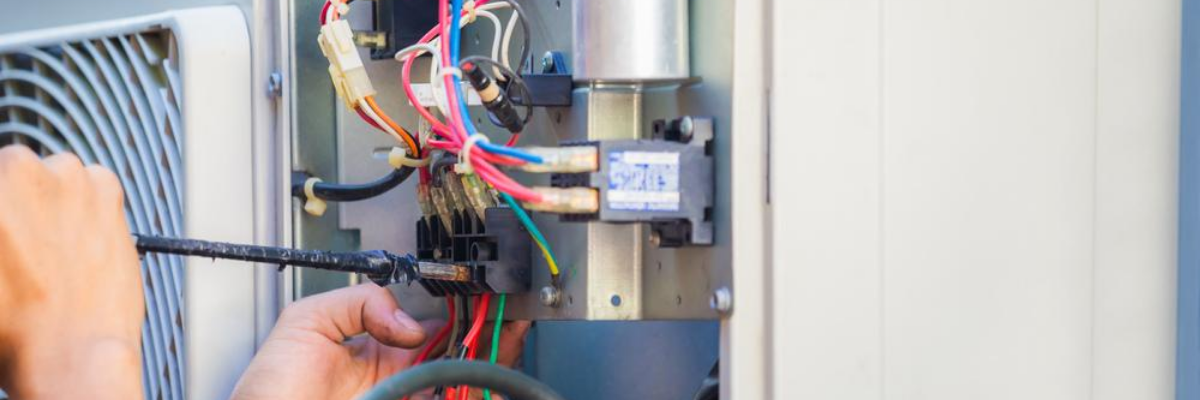If you’re thinking about a career in HVAC and Refrigeration service, you might not be sure of the best way to get started. Should you go to college or technical school, or try to get into an HVAC apprenticeship program? Unlike many other careers, there are a number of paths to your first job.
One of the many attractive aspects of a career in HVACR service is that you don’t need to take on the cost of higher education to get qualified. While some technicians do start with college or technical school, it’s definitely not a requirement.
Here in the New York City metro area, someone with the right skills and qualities can get hired by service companies as a junior technician or “helper” with no previous experience, and then get placed by their employer into our local union’s HVAC apprenticeship program.
The best part of this path is this: your employer pays for the cost of the training, AND you work as an entry-level technician and earn money while you’re learning.
We spoke with Zachary Bauer, a recent graduate of the UA Local 638 apprenticeship training program who is currently working for Carrier Corporation, about his experience in the program.
UA Local 638 HVAC apprenticeship program Q & A
How did you get chosen to participate in the Local 638 apprenticeship program?
“I was working for Johnson Controls at the time, and they submitted my application to the union. Then I had to take a test, a basic English and Math proficiency test. And finally, there was an interview, and I was accepted into the program.”
What was it like working and going to school at the same time?
“For the first two years, you actually go to class one day of the week instead of going to work, which was nice. So that was easy to balance. In the third and final year, you have to go to class in the evening one day a week after work, on your own time. Then we’d have projects and assignments for certain classes, like reading a chapter in a textbook and answering questions. In electrical classes, we would have to draw design schematics and describe the logical process of the schematic, things like that. The time outside of class wasn’t too demanding, for the most part.”
What were the classes and the instructors like?
“Some days were full lectures, some days were full time in the shop doing hands-on practice, and some days we came in for a short lecture before moving into the shop. It was a good balance. In the second half of the program, there is a lot more shop time.”
“Through the whole program, I had Tim Rooney and John Romano as instructors, and both of them were extremely knowledgeable and experienced with all the nuances. The classes were small and the format was very open. It was like a constant dialog between the students and the instructors. If you had questions, it was always easy to come forward and get the help that you needed.”
“The same group of students were together for three years, so we developed connections and helped each other. Even now that we have graduated, we have stayed in touch and have served as resources for each other even outside the classroom.”
How did you like the training facility and the instructors?
“The new training center for Local 638 is really nice! There’s a whole shop to practice copper brazing, which is pipe welding that’s commonplace in the industry. They have a whole shop with air conditioning and refrigeration equipment, so upcoming classes will have a wide variety of equipment to work on: walk in boxes, refrigerators, different types of air conditioning equipment programmed with different types of faults so students can practice troubleshooting. There’s an electrical shop that’s very advanced. There’s a lot of capability there: 3-phase power, a number of different components. To me, that was the most impressive part, because electrical is the aspect that many people struggle with.”
What aspects of the training did you find most valuable?
“I’m someone who places a lot of value on theory. Ultimately, the more thoroughly you can understand the system and how the process works, the better you can troubleshoot the system. So no matter what you’re looking at, no matter how big it is or how complicated it looks at first glance, everything follows the same rules. So that’s what I think is most important. But on top of that, there is also a lot of hands on work—getting your hands on equipment in a safe setting. That’s very important also. For example, electrical theory is difficult to learn in the field!”
Were you able to practice what you were learning in class in your job?
“The program is focused mostly on what we call “light commercial” equipment, such as rooftop air conditioners and air conditioners within buildings, which is what most people in the program will be working on outside of the classroom.”
“My case was unusual, since in my job with Johnson Controls first, and now Carrier, I worked more on the industrial side with large tonnage centrifugal chillers, which is a small sector of the industry.”
“All the theory applies across the board, but the specific examples of equipment weren’t what I was working on. But there was still a lot of knowledge to be gained.”
What’s the value in having completed your union apprenticeship?
“As students progress through the program, they get pay scale increases each year. After graduation, you’re eligible for the journeyman rate if your employer finds you qualified.”
“For me, I feel like it’s a valuable thing to have on my resume.”
What’s the next step for your career?
“For all of us who just graduated, the next step is trying to get UA Star certified, which is offered at our union school. Even though it is separate from the apprenticeship program, most people find that the test for the UA Star is the “real” final for the program. It’s a certification that proves your competence and can transfer to another UA local in another state. So I can take that certification and it helps me get into the union in another state.”
Learn more about UA Local 638 and the HVAC apprenticeship program
Check out these resources to learn more about career opportunities in HVAC and Refrigeration, membership in our local union, and training to become a service technician:
HVAC Technician Apprenticeship: What to Expect in the First Year
Get to Know Your NYC Refrigeration & HVAC Union: UA Local 638
HVAC Union vs. Non Union Jobs: Which Way Should You Go?

